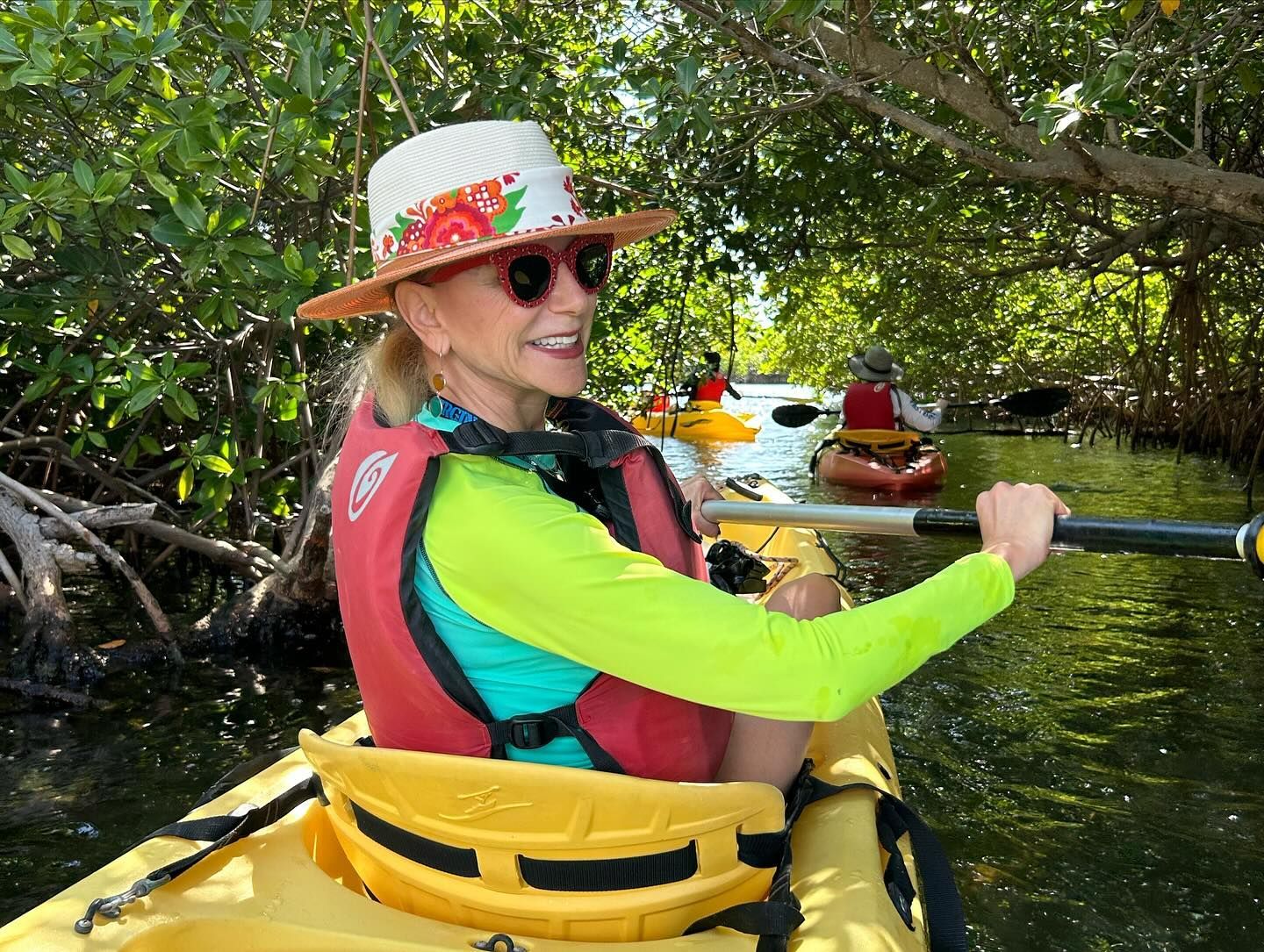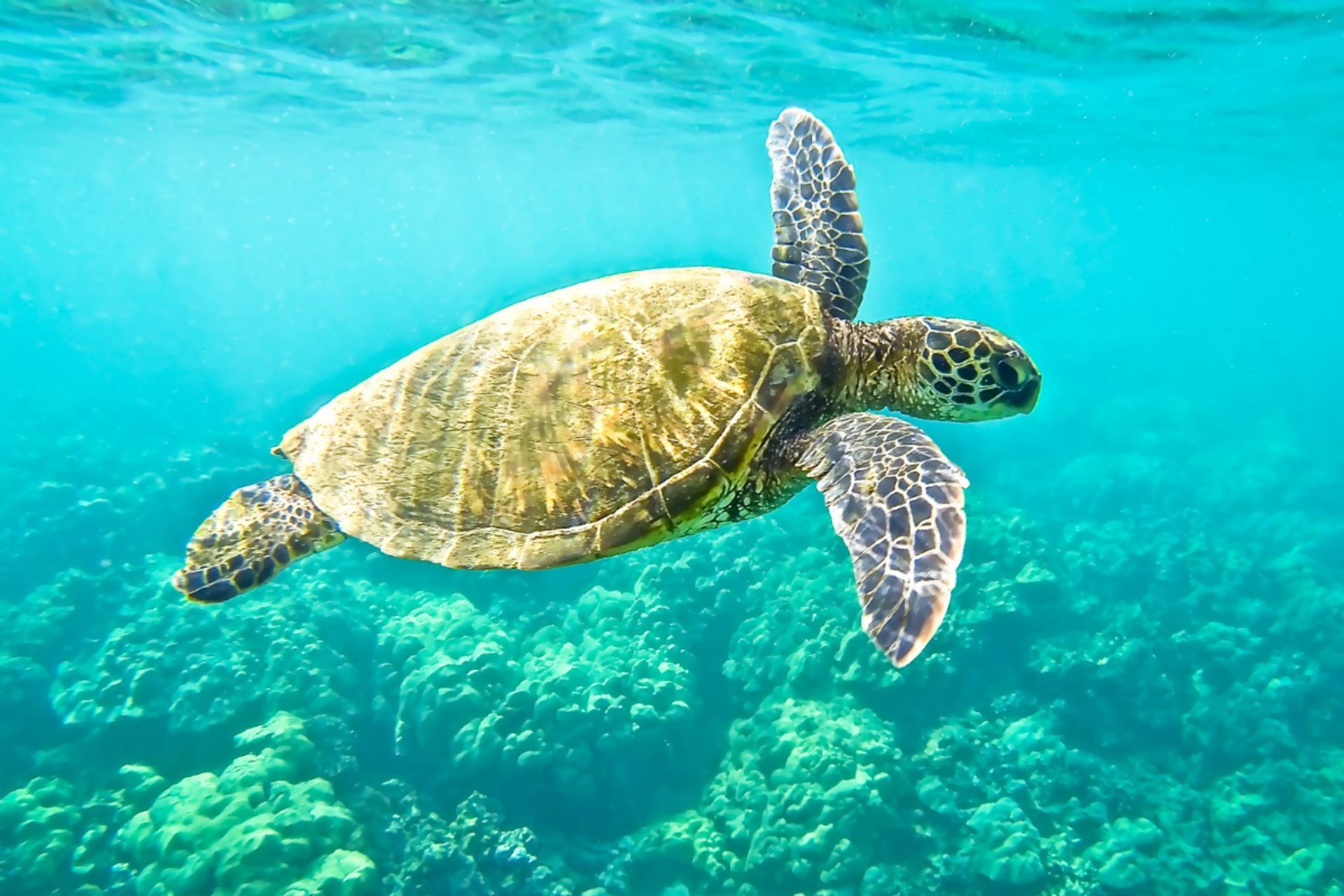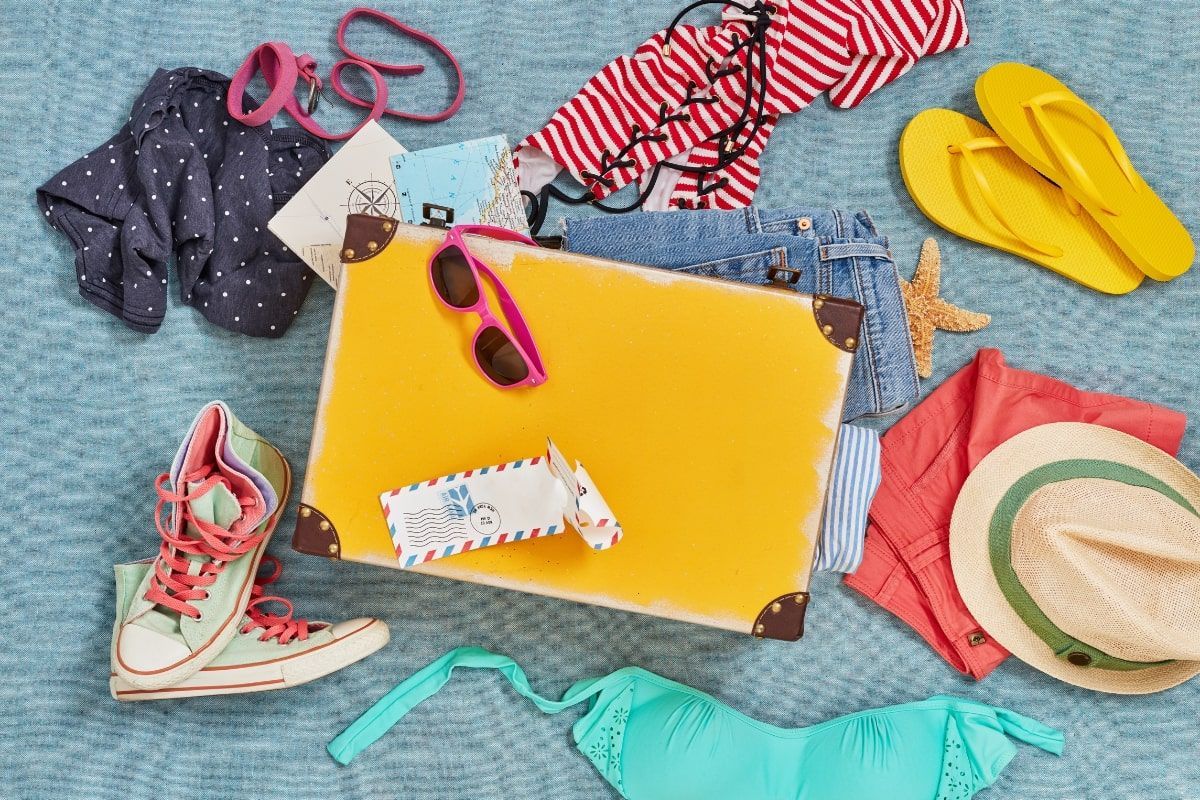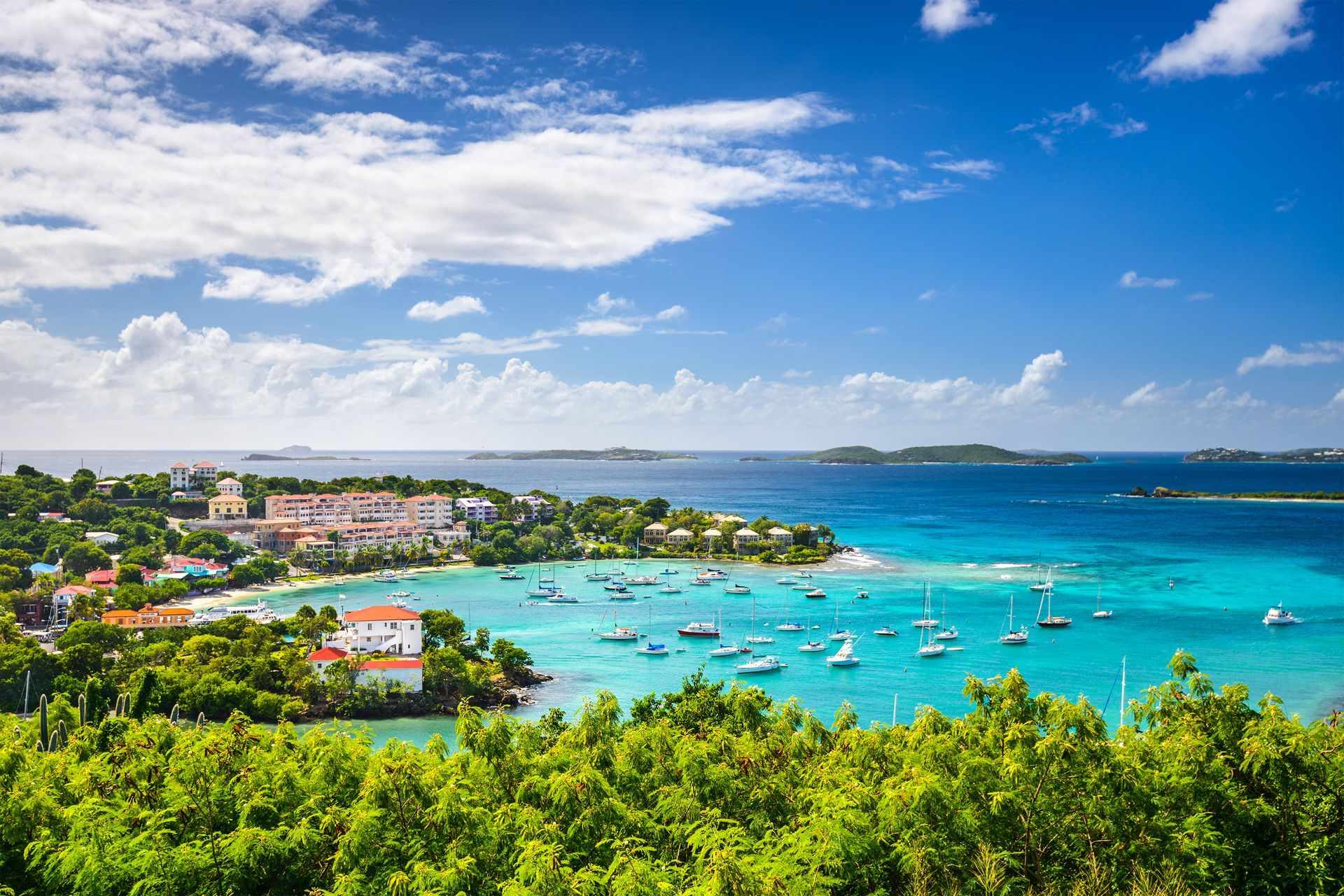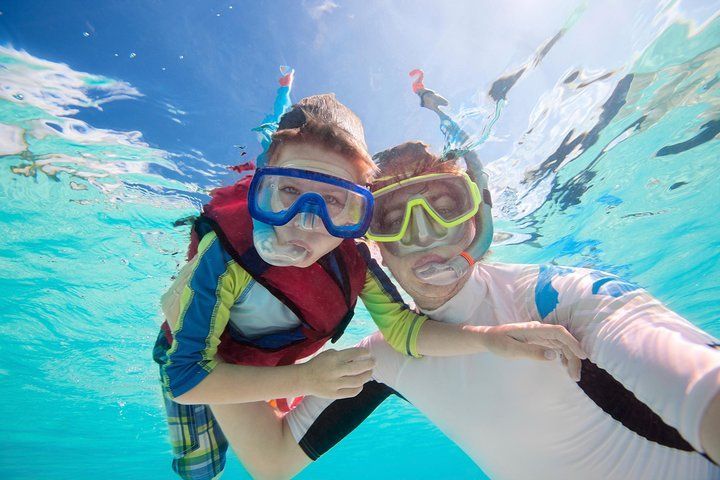FAQS: SNORKELING WITH SEA TURTLES
Experience the Magic—And Help Protect It Too
Have you ever locked eyes with a sea turtle beneath crystal-clear Caribbean waters?
Here in the U.S. Virgin Islands, these moments aren’t rare, they’re unforgettable. With thriving sea grass beds, protected sanctuaries, and warm, shallow waters, the Virgin Islands offer some of the best sea turtle snorkeling experiences in the world. Whether you’re paddling through the Mangrove Lagoon of St. Thomas, floating beside them in the calm waters off St. John, or exploring a lesser-known turtle haven in St. Croix, every encounter brings you closer to nature, and to something deeper: purpose.
At Virgin Islands Ecotours, we believe every swim should leave the ocean better than we found it. That’s why our tours don’t just showcase sea turtles, they help protect them.
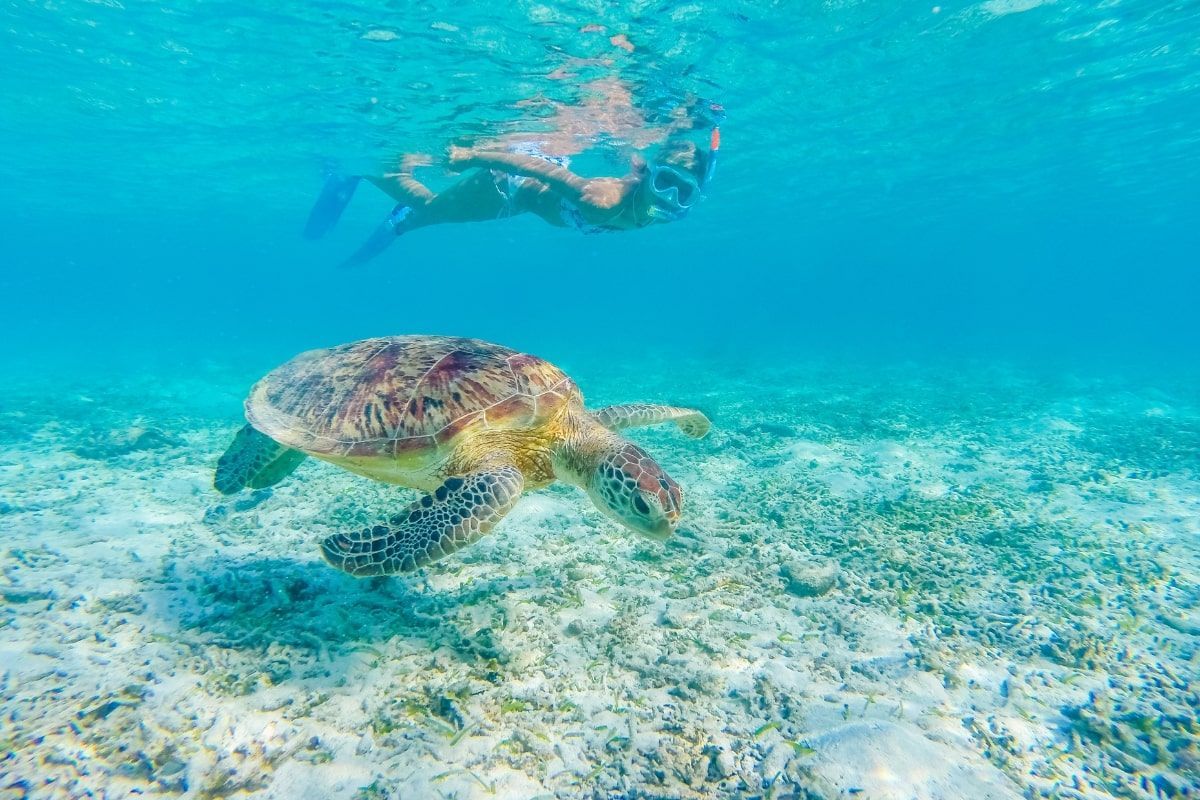
Where can I snorkel with sea turtles in the USVI?
If you keep your eyes peeled, you’ll start to spot sea turtles both above and below the water in the USVI. If you’re on a boat or onshore, you can often catch their heads poking out of the surface of the water when they come up for a gulp of air. Underwater, you can snorkel with sea turtles in several spots off the shores of St. Thomas, St. John, and St. Croix.
St. Thomas: Our Snorkel with Sea Turtles Tour takes you to calm bays and lush seagrass beds where turtles feed. This tour is great for families and beginners, and includes time to relax and beachcomb too.
St. John: Join our Snorkeling with Sea Turtles Tour, a guest favorite! Float alongside these majestic creatures in calm, protected waters while observing their natural behaviors.
St. Croix: Discover our Best Snorkeling with Sea Turtles Tour, a hidden gem that combines vibrant marine life with an authentic, uncrowded vibe.
Each of these tours is led by expert guides who share local insight, help spot turtles, and ensure you leave not only amazed - but inspired.
What kinds of sea turtles are in the US Virgin Islands?
The USVI is home to three of the seven species of sea turtle. Here you are most likely to snorkel with green sea turtles and hawksbill sea turtles. Leatherback sea turtles also inhabit the waters of the Virgin Islands, though they are more rare to see.
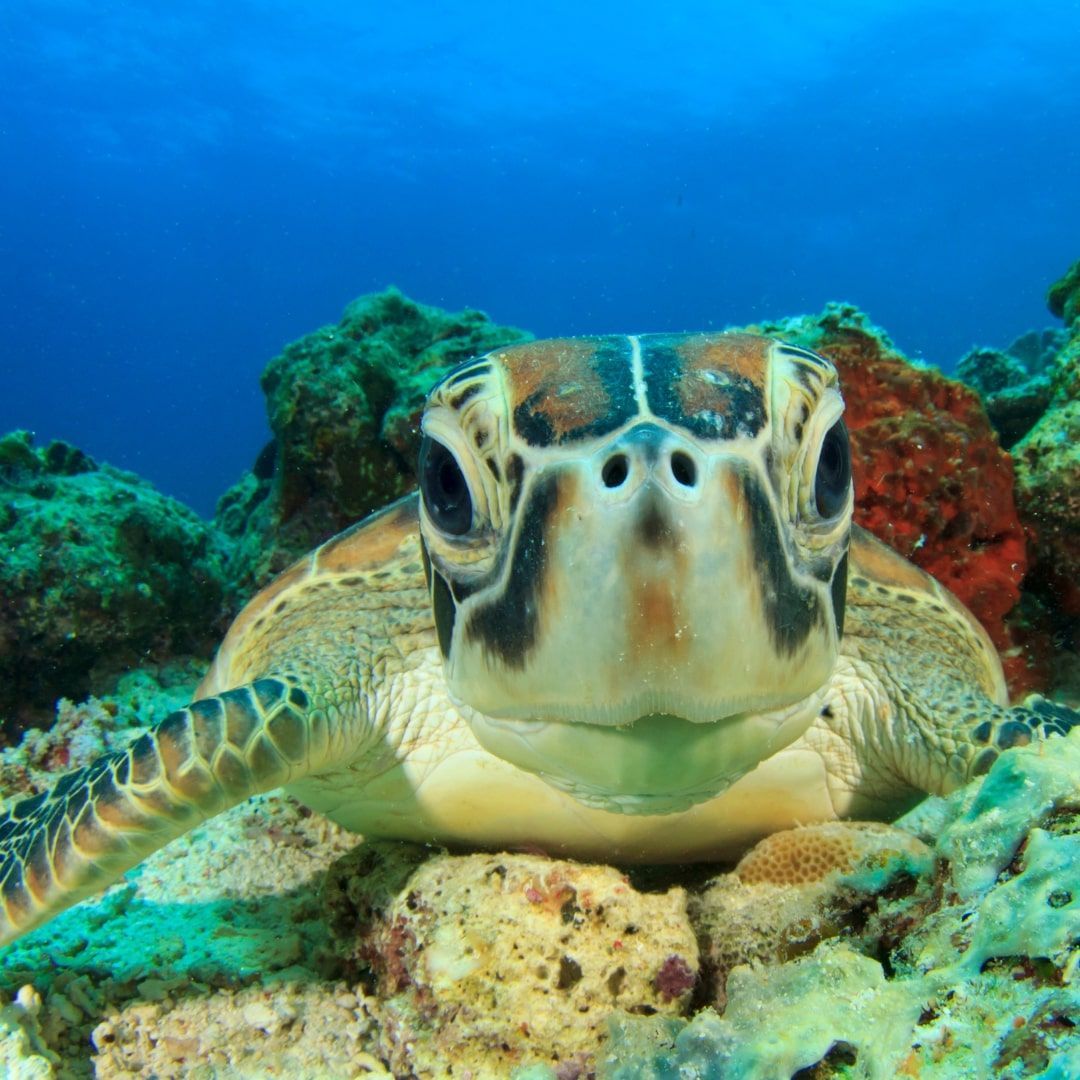
Can I touch the sea turtles?
No, we ask that you please respect the sea turtles and refrain from touching them. Both green and hawksbill sea turtles are on the endangered list and are protected in the US Virgin Islands. There are stiff penalties (up to a $5,000 fine and/or imprisonment) for harassing the sea turtles by touching them, riding them, or otherwise disturbing them. Please admire them with your eyes, not your hands.
Can I take pictures with the sea turtles?
You are welcome to take pictures of the sea turtles, so long as you do not disturb their natural behavior while doing so. Please do not chase the sea turtles for a photo, as it frightens them. If using a selfie stick or other extended camera device, please remember to maintain the same distance and do not intrude upon the sea turtles’ personal safe space. Please also remember to not hover above the sea turtles, which can make them feel trapped beneath you and unable to come up for air when they need.
Can I feed the sea turtles?
Sea turtles are great at finding their own food and their natural diet is essential for them to maintain optimal health. Not only is human food bad for their health, feeding the sea turtles also teaches them to seek out humans for food in the future, which puts them at a far greater risk of injuries or death by boating accidents. Please do not feed the sea turtles. You can watch them eat the seagrass that they love when you’re snorkeling with them!
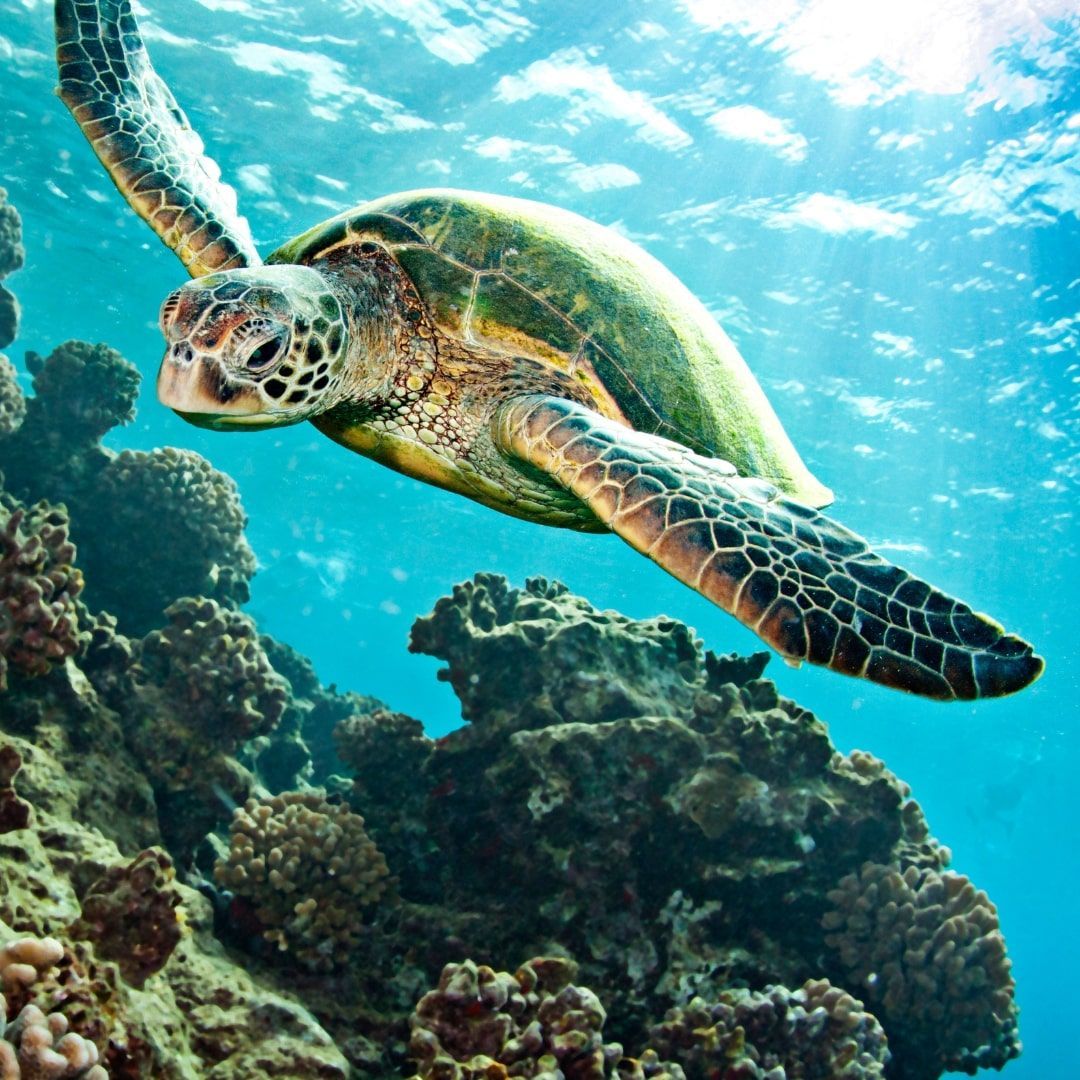
What do the sea turtles eat?
Green sea turtles are herbivores and largely stick to eating seagrass and algae. Hawksbill turtles love their greens too, but will also snack on sponges and other invertebrates such as jellyfish and anemones.
How long do sea turtles live?
It can be tricky to get long term data on the lives of sea turtles due to the distances they travel. Studies have found that sea turtles can live for 50+ years, if they make it into adulthood.
How long can a sea turtle hold its breath?
Sea turtles can hold their breath for a surprisingly long time. If they’re relaxed and resting, they can hold their breath for a couple of hours. But if they’re stressed or otherwise active, they need air more frequently. Usually, when you see sea turtles while snorkeling, you’ll observe them going up for air every 5-10 minutes or so while they eat and swim around.
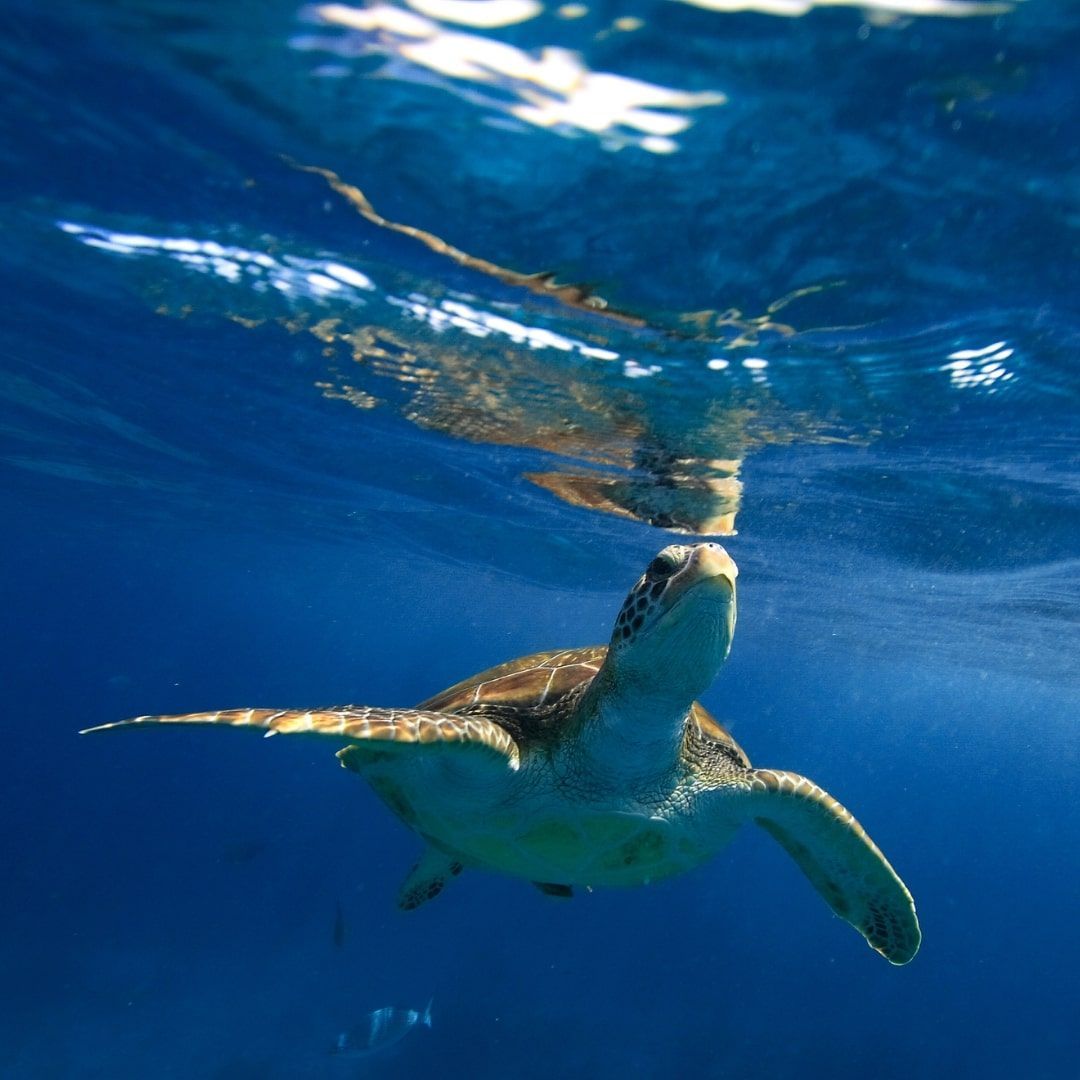
How fast can a sea turtle swim?
Generally, sea turtles swim around slowly, grazing and enjoying “island time.” If they’re being chased or feel threatened in some way though, they can swim quite fast, reaching speeds of up to 25 mph for short distances.
When do the sea turtles lay their eggs? Can I see the sea turtle babies once they’ve hatched?
In the US Virgin Islands, we’re fortunate to have the VIIS Turtle Monitoring program in place on St. John. Volunteers monitor and protect the sea turtles’ nesting sites and the hatchlings. Sea turtles nest from July – November in the USVI, though peak nesting season begins in August. If you’re on island during those months, there is a chance that you could see the sea turtle babies once they’ve hatched. However, please keep in mind that the nesting areas are protected and we must not walk, crawl, or otherwise disturb the areas, nor interfere with the baby sea turtles. Please also refrain from shining light onto the beaches at night.
How can I help protect the sea turtles of the USVI?
Every visitor has a role to play in conservation. Here’s how to help:
- Keep your distance (think 6–10 feet—social distancing for turtles!)
- Use reef-safe sunscreen or wear a rash guard to prevent chemical pollution
- Never leave trash behind—turtles can mistake plastic for food
- Avoid beach lights at night during nesting season (July to November)
- Support local conservation through the “Adopt a Sea Turtle” Program with Friends of Virgin Islands National Park
We’ve also put together a helpful guide for responsible travel:
See Our Sea Turtle Conservation Page
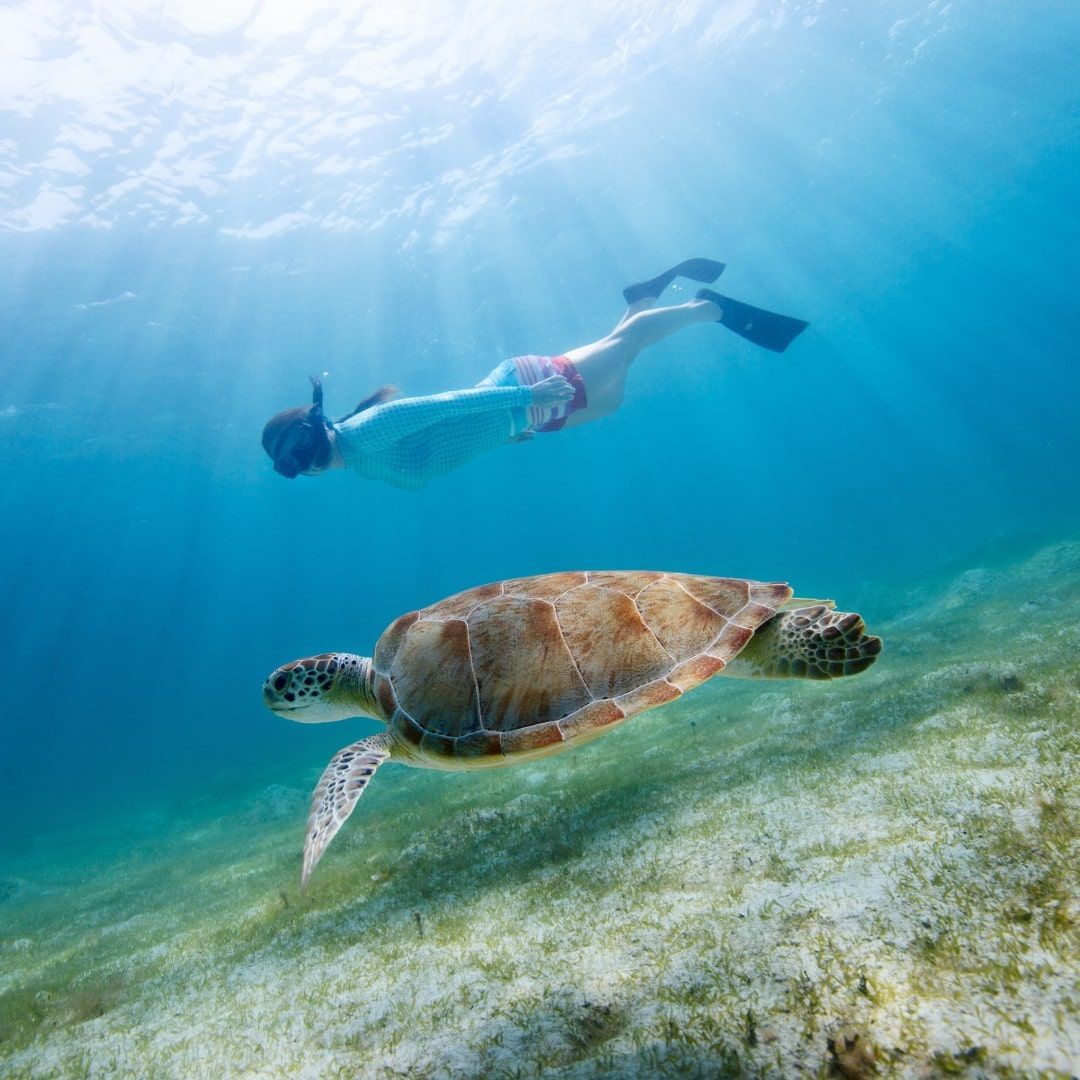
We hope that helps answer some of your questions about swimming and snorkeling with the sea turtles in the US Virgin Islands! If you have more questions, our guides will be happy to share their local knowledge on your next tour.
You May Also Like
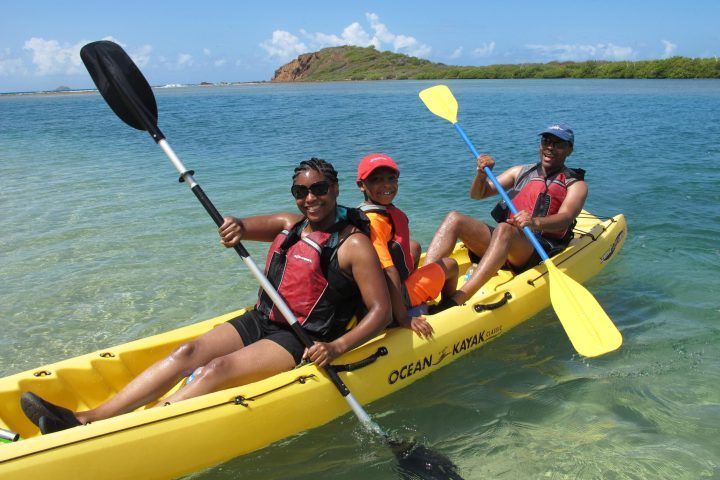
Cas Cay Kayak, Hike & Snorkeling Ecotour
St. Thomas
3 Hours
Embark on an exclusive morning adventure through the serene beauty of Cas Cay, where tranquil mangroves, vibrant marine life, and breathtaking volcanic vistas await—discover this hidden gem with knowledgeable guides.

St. John
3 Hours
Hike & Beach Adventure Tour: Discover Honeymoon Beach on St. John
Looking to pack a BIG experience into a short amount of time? Then we’ve got just the adventure for you! This tour is designed for groups of 4 or more.
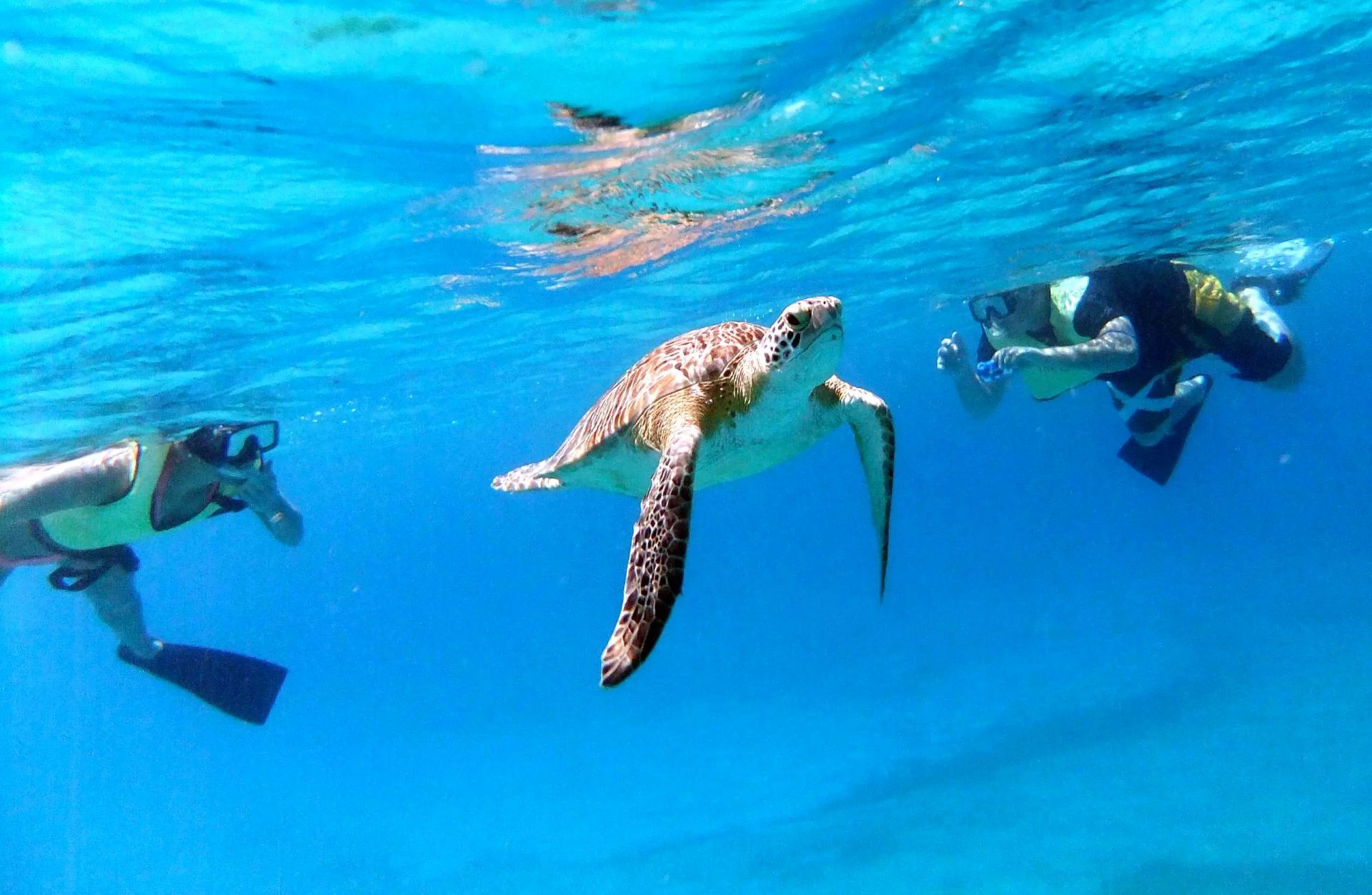
Swim alongside graceful Hawksbill and Green Sea Turtles in the crystal-clear waters of St. Croix on this unforgettable guided snorkel tour. Explore vibrant coral reefs and encounter diverse marine life with expert guides ensuring a safe and memorable experience. Perfect for all skill levels, this unique adventure offers an up-close look at St. Croix’s stunning underwater world—an experience you’ll never forget.
St. Croix
1.5 Hours
St. Croix's Best Snorkeling with Sea Turtles
Other Blogs

